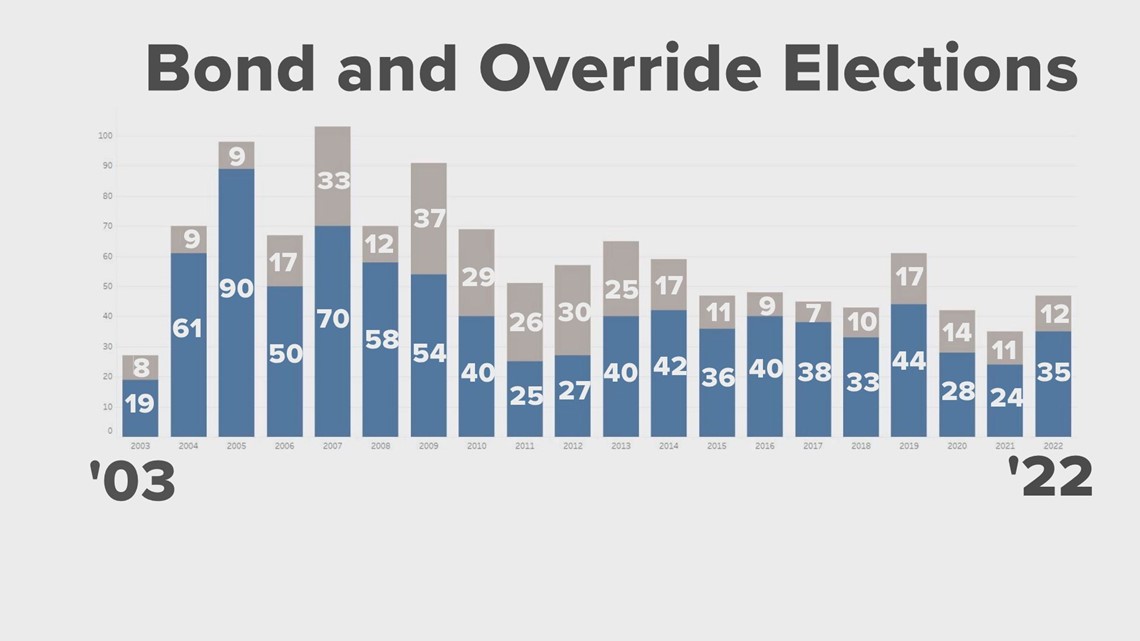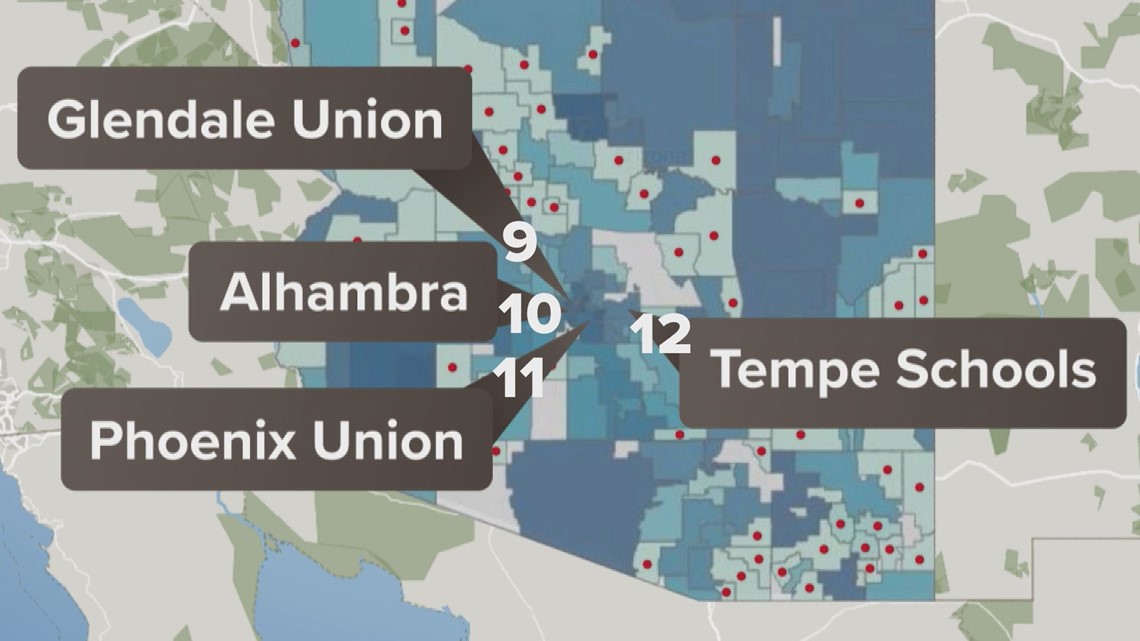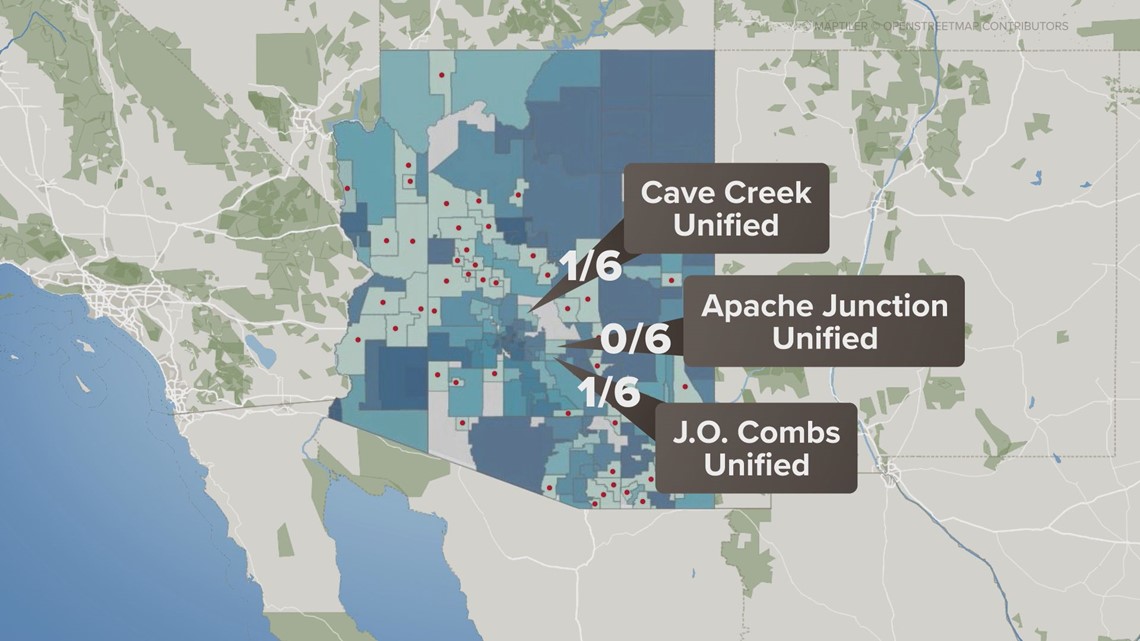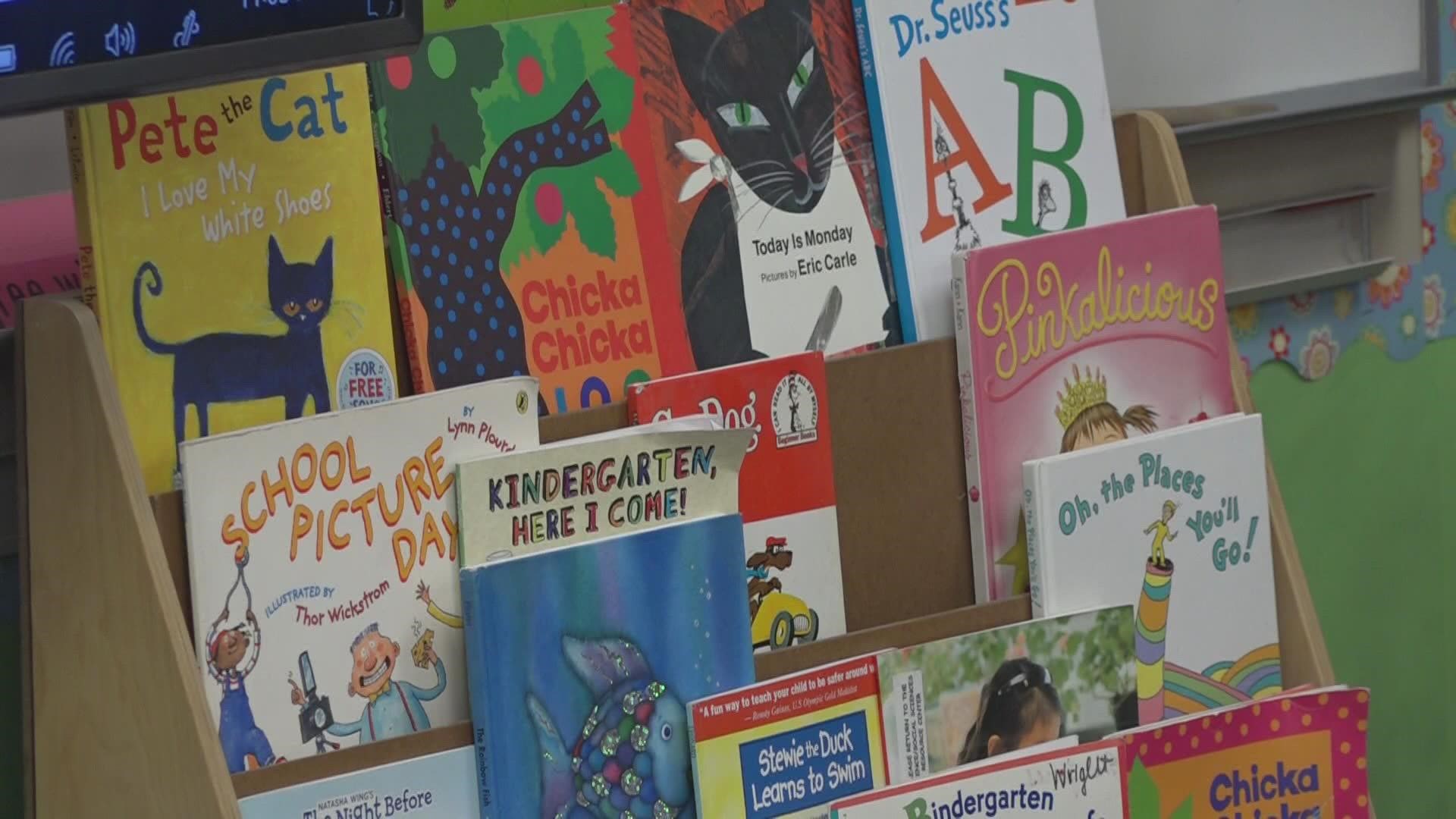ARIZONA, USA — Educators roundly agree the property value of a school district should not determine a child’s quality of education. But new numbers released to 12 News reveal how local bonds and overrides create disparities across Arizona.
Bonds and Overrides are local, voter-approved property tax increases. They pay for all kinds of expenses including all-day kindergarten, teacher raises, technology, major repairs, and the construction of new schools.


A report by education consultant Anabel Aportela of the nonprofit Education Reform Finance Group puts into perspective what’s happened in Arizona over the past two decades. It shows most elections are successful each year, but many school districts consistently fall short to get bonds and overrides passed.
Most Phoenix-area districts pass bonds and overrides
Districts that consistently pass bonds and overrides since 2003 are mostly concentrated in Maricopa County. Rural school districts are less likely to pass them, though there are exceptions. Districts whose voters consistently pass local tax increases include Glendale Union (9 for 10), Alhambra Elementary School District (10 for 12), Phoenix Union High School District (11 for 13), Tempe Schools (12 for 12), Mesa Unified (7 for 8), and Flagstaff Unified (11 for 12).


Other local districts have seen mixed results since the recession in 2008. Peoria Unified (42 schools) is 4 for 9. Dysart Unified (27 schools) is 3 for 9. Queen Creek Unified (17 schools) is 5 for 11.
Over that span of time, three East Valley districts have struggled the most. J.O. Combs Unified (8 schools) is 1 for 6. Apache Junction Unified (6 schools) is 0 for 6. Cave Creek Unified (7 schools) is 1 for 6.
Dr. Paul Tighe, Executive Director of the Arizona School Administrators, Inc. said although the state equalization system to fund schools is one of the best in the country, the ability of a community to pass bond and override elections creates disparities. Tighe said the state falls short in providing uniform funding over time.
“With the State's failure to provide for establishment and maintenance of adequate and uniform public school facilities, these mechanisms (bonds and overrides) have been imperative for many districts to provide safe schools, technology and transportation vehicles to serve students,” Tighe said.
In the case of Cave Creek Unified, the average teacher salary is lower ($50,000) compared to neighboring districts that have had better success passing bonds and overrides. Average salaries are $58,600 in Scottsdale Unified, $56,600 in Paradise Valley Unified, and $54,700 in Deer Valley Unified.


Sharp contrasts in local funding
The data also reveals sharp contrasts in local funding in some regions of the state. For example, the largest school district in southern Arizona, Tucson Unified (89 schools), is 1 for 7. Just to the north, Catalina Foothills Unified (8 schools) is 12 for 12. Just to the west, Marana Unified (17 schools) is 7 for 9. To the east, Tanque Verde Unified (4 schools) is 8 for 11.
In northern Arizona, Campe Verde Unified (3 schools) is 0 for 2. Further north, Cottonwood-Oak Creek Elementary District (4 schools) is 6 for 6. Just to the northeast, Flagstaff Unified (16 schools) is 11 for 12.
The budget formula passed by the state last June includes nearly $1 billion in new annual funding and weighted per-pupil funding for rural communities. However, the formula is not in effect until the Arizona Legislature votes to lift a spending cap, known as the Aggregate Expenditure Limit (AEL). Charter schools are exempt from the AEL.
Up to Speed
Catch up on the latest news and stories on our 12News YouTube playlist here.

